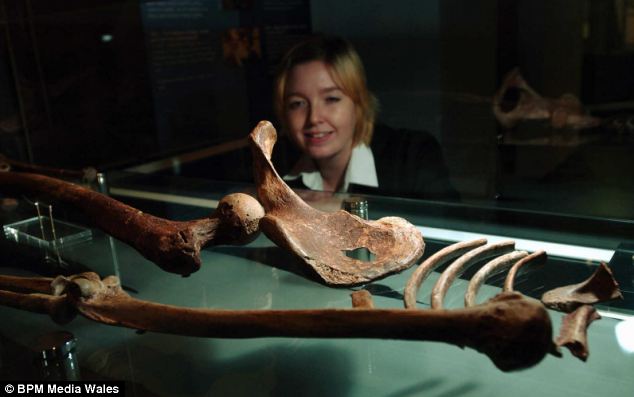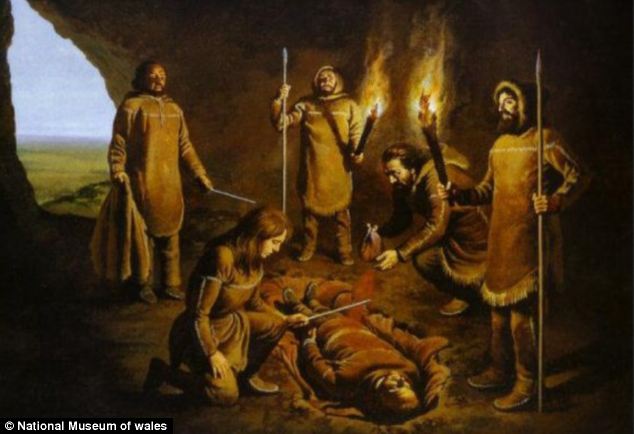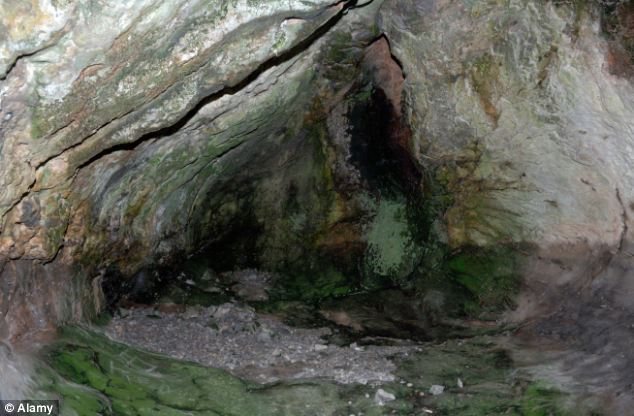A Welsh politician and Oxford University are at war over 33,000 year old human remains.
Byron Davies, the AM (Assembly Member) for South Wales in the National Assembly for Wales (Cynulliad Cenedlaethol Cymru), has asked the university to return the remains of the Red Lady of Paviland, which received the oldest ceremonial burial in Europe.
The Red Lady of Paviland was discovered in a coastal cave - Goat's Hole Cave - by the eccentric Reverend William Buckland on the Gower Peninsula in South Wales in 1823.
The skeleton got its name due to the fact that its bones were stained red with ochre.
However, Buckland got the skeleton's sex wrong, and the "Red Lady" is actually a man.
Oxford University said the skeleton is one of the iconic relics of the British Palaeolithic, and a cast of the skeleton is on permanent display, along with related artefacts, at the Oxford University Museum of Natural History.
Mr Davies believes the skeleton ‘belongs to Gower’ and said: ‘It would be good to have it back where it belongs. It adds to the bigger picture of bringing people to the city and to the Gower.’
‘I understand the University of Oxford is not in favour of releasing it, so there would have to be some negotiation.’
Battle for the Red Lady of Paviland: Welsh politician asks Oxford University to return 30,000-year-old skeleton to its homeland
The Red Lady of Paviland is actually the skeleton of a man and got its name as it was dyed in red ochre, giving its bones the unusual colour
It is the oldest ceremonial burial of a human discovered in Western Europe
Byron Davies, the Assembly Member for South Wales, has asked Oxford University to return the remains of the man who was buried in Gower
By Sarah Griffiths
25 November 2013
Daily Mail
Daily Mail
A Welsh politician has picked a fight with Oxford University by asking for the return of one of Wales' oldest treasures.
The university is currently the custodian of a 33,000-year-old skeleton that received the oldest ceremonial burial in Western Europe.
But Byron Davies, the Assembly Member for South Wales, has asked the university to return the remains of the person known as the Red Lady of Paviland, who was buried in Gower, Wales.
The university is currently the custodian of a 33,000-year-old skeleton that received the oldest ceremonial burial in Western Europe.
But Byron Davies, the Assembly Member for South Wales, has asked the university to return the remains of the person known as the Red Lady of Paviland, who was buried in Gower, Wales.

The 'Red Lady of Paviland' was discovered in a limestone cave in Gower in 1823 by a geology professor at the Oxford University, where it is kept. Here, Museum Assistant Lisa Roberts is pictured with the remains when they were on show at the National Museum and Galleries of Wales in Cardiff
The skeleton, which is actually that of a man, got its name as it was dyed in red ochre, giving its bones the unusual colour.
It was discovered in a limestone cave in Gower in 1823 by a geology professor at the university, which is why the skeleton has been under lock and key in Oxford ever since.
It is still the oldest ceremonial burial of a human discovered in Western Europe.
Oxford University said the skeleton is one of the iconic relics of the British Palaeolithic, and a cast of the skeleton is on permanent display, along with related artefacts, at the Oxford University Museum of Natural History.
It was discovered in a limestone cave in Gower in 1823 by a geology professor at the university, which is why the skeleton has been under lock and key in Oxford ever since.
It is still the oldest ceremonial burial of a human discovered in Western Europe.
Oxford University said the skeleton is one of the iconic relics of the British Palaeolithic, and a cast of the skeleton is on permanent display, along with related artefacts, at the Oxford University Museum of Natural History.

The bones were thought to be a woman's because of jewellery found nearby and were wrongly dated to Roman times by the professor when they were found (reconstruction of Paviland burial pictured)

The Red "Lady" of Paviland was discovered by the Reverend William Buckland, an Oxford University geologist, in a coastal cave in South Wales in 1823. The eccentric Buckland was known for his fondness for eating all sorts of flora and fauna, including bluebottles
The bones were thought to be a woman's because of jewellery found nearby and were wrongly dated to Roman times by the professor when they were found.
Mr Davies believes the skeleton ‘belongs to Gower’ and said: ‘It would be good to have it back where it belongs. It adds to the bigger picture of bringing people to the city and to the Gower.’
‘I understand the University of Oxford is not in favour of releasing it, so there would have to be some negotiation.’
Mr Davies believes the skeleton ‘belongs to Gower’ and said: ‘It would be good to have it back where it belongs. It adds to the bigger picture of bringing people to the city and to the Gower.’
‘I understand the University of Oxford is not in favour of releasing it, so there would have to be some negotiation.’

The skeleton was found during at Goat's Hole Cave - one of the limestone caves between Port Eynon and Rhossili, on the Gower Peninsula, south Wales
Mr Davies believes the skeleton should be on display.